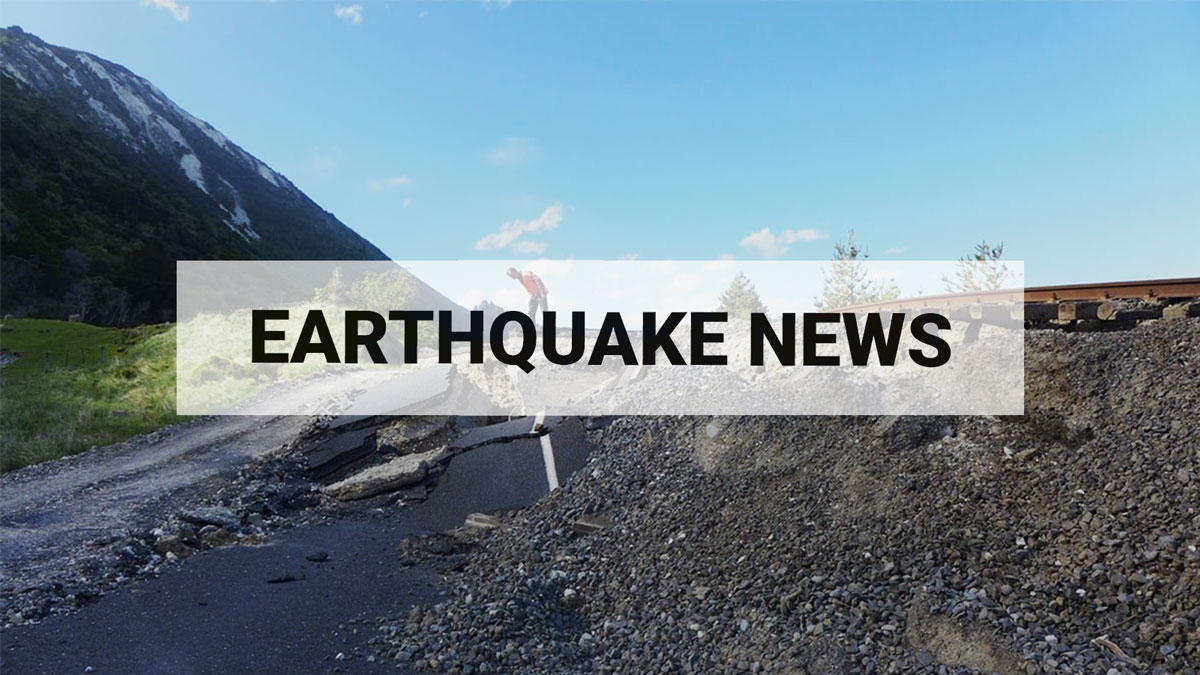
What’s behind the recent earthquake clusters in the North Island?
Over the past week, two unrelated small clusters of earthquakes have caught the attention of locals. While none of the quakes were large, they offer fascinating insights into the dynamic forces at work beneath our feet. Let’s take a closer look at what triggered these recent shakes and what they tell us about Aotearoa New Zealand’s restless geology.
Castlepoint sequence
Since midnight Monday August 4th we have located a small swarm of 34 earthquakes 15 km west of Castlepoint in the Wairarapa. The largest of the quakes were a M4.1 reported felt by over 420 people, followed 8 minutes later by a M4.2.
The earthquakes have occurred in a foreshock-mainshock-aftershock sequence where a smaller earthquake comes first (a foreshock), then the main quake, and then several smaller ones afterwards (aftershocks). Most of the earthquakes followed within minutes and hours of the mainshock.
The sequence has occurred at a depth of 20 km. The two larger events involved the ground being stretched apart which, along with their depth, suggests they come from within the subducting Pacific plate as it pushes under the Australian plate.
Watch: Subduction in New Zealand
Rotorua Swarm
A few days earlier on Sat Aug 2nd, Rotorua experienced a small swarm of 15 earthquakes. While the largest was only magnitude 2.3, the quakes were shallow (shallower than 7 km) and occurred close to the city, making them easily felt.
Given their swarm-like character and location in a geothermal area, it is likely these earthquakes were triggered by underground fluid movement or pressure changes associated with the local geothermal activity. This kind of activity is common in geothermal areas like Rotorua, where natural heat and pressure changes from below can set off fault movement. Rotorua geothermal field often has small swarms in the north and south of the field and these occurred in the northern area.
Read: 2021 Okataina earthquake swarm
Read: 2020 swarm southeast of Rotorua
Read: 2025 earthquake swarm north of Taupō
What are swarms?
While they may sound alarming, earthquake swarms are simply a group of quakes of similar size, happening close together in time and location. Unlike typical earthquake sequences swarms don’t usually have one big quake followed by smaller ones. Instead, they’re more like a group of small shakes that come and go over hours, days or even weeks.
Earthquake swarms are quite common in Aotearoa New Zealand and around the world. One of the more active areas for swarms is the Taupō Volcanic Zone (TVZ), the area from Ruapehu up through Whakaari/White Island.
These swarms can be triggered by fluids like water, or steam, moving through underground cracks and faults. In volcanic regions these fluids might come from deep magma or from geothermal systems. As the fluids move, they can change the pressure holding faults together, sometimes just enough to let them slip and cause earthquakes.
In other cases, swarms happen during slow slip events, like those at the Hikurangi subduction zone. These are slow, silent movements of the earth's crust that happen over days or weeks. As the crust shifts, it changes the stress in nearby faults and can trigger swarms of small to moderate earthquakes. Scientists are working hard to understand how these swarms, slow slip events, and larger earthquakes are connected, so we can better predict when and where earthquakes might happen.
Read: Small earthquakes, big insights
We can’t prevent natural hazards, but we can, and should, be prepared for them
Drop, Cover, and Hold during a large earthquake. If it is Long or Strong, Get Gone : If you are near the coast, or a lake, and feel a strong earthquake that makes it hard to stand up OR a weak rolling earthquake that lasts a minute or more move immediately to the nearest high ground or as far inland as you can, out of tsunami evacuation zones.
For information on preparing for earthquakes there are guidelines from the National Emergency Management Agency's (NEMA) Get Ready website.
Prepare your home. Protect your whānau. There’s a lot we can do to make our homes safer and stronger for earthquakes. Natural Hazards Commission Toka Tū Ake's website has key steps to get you started.




